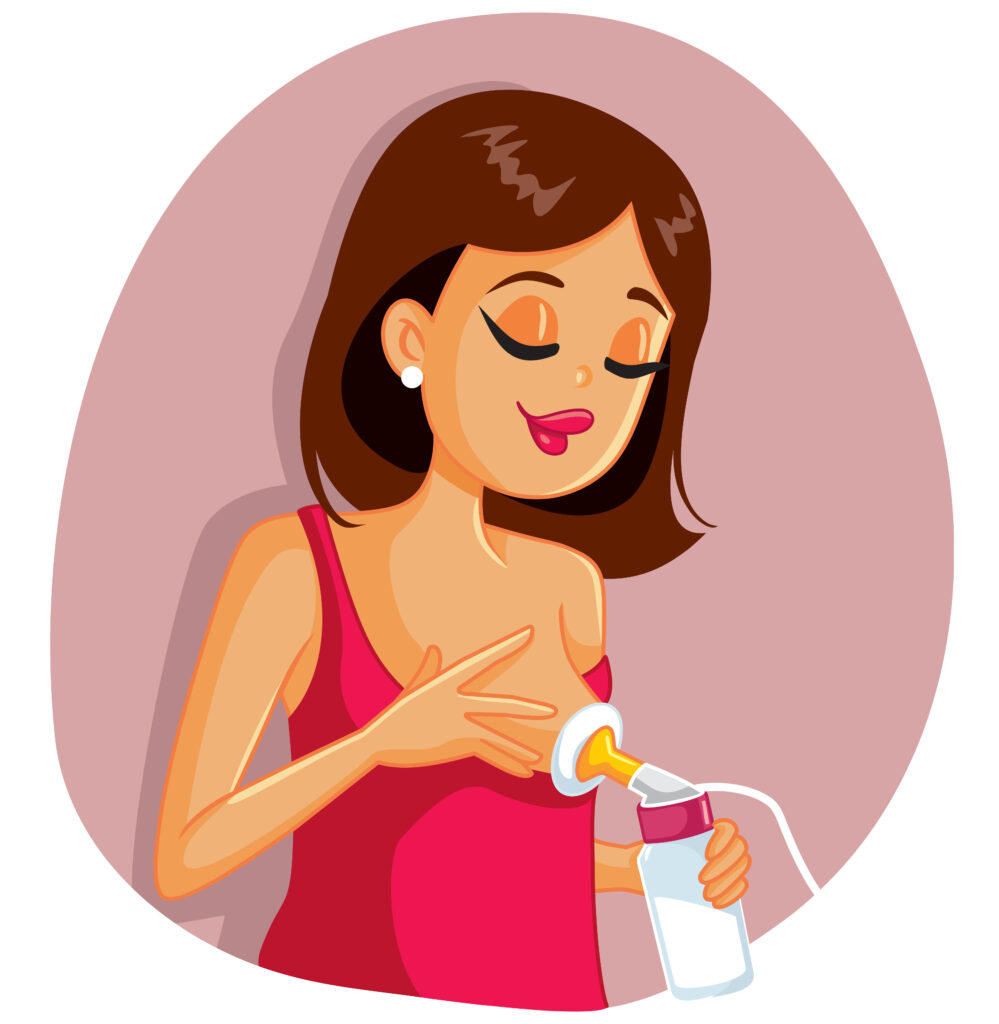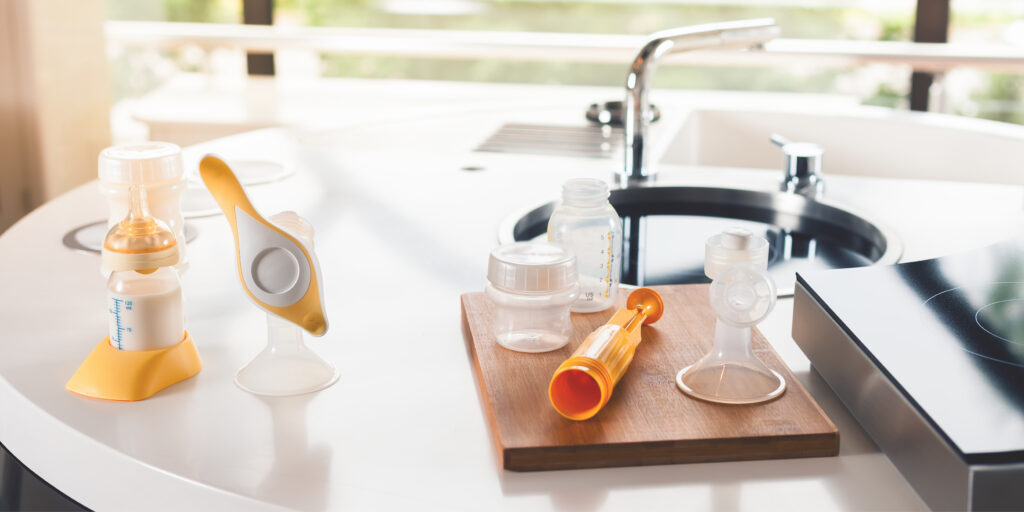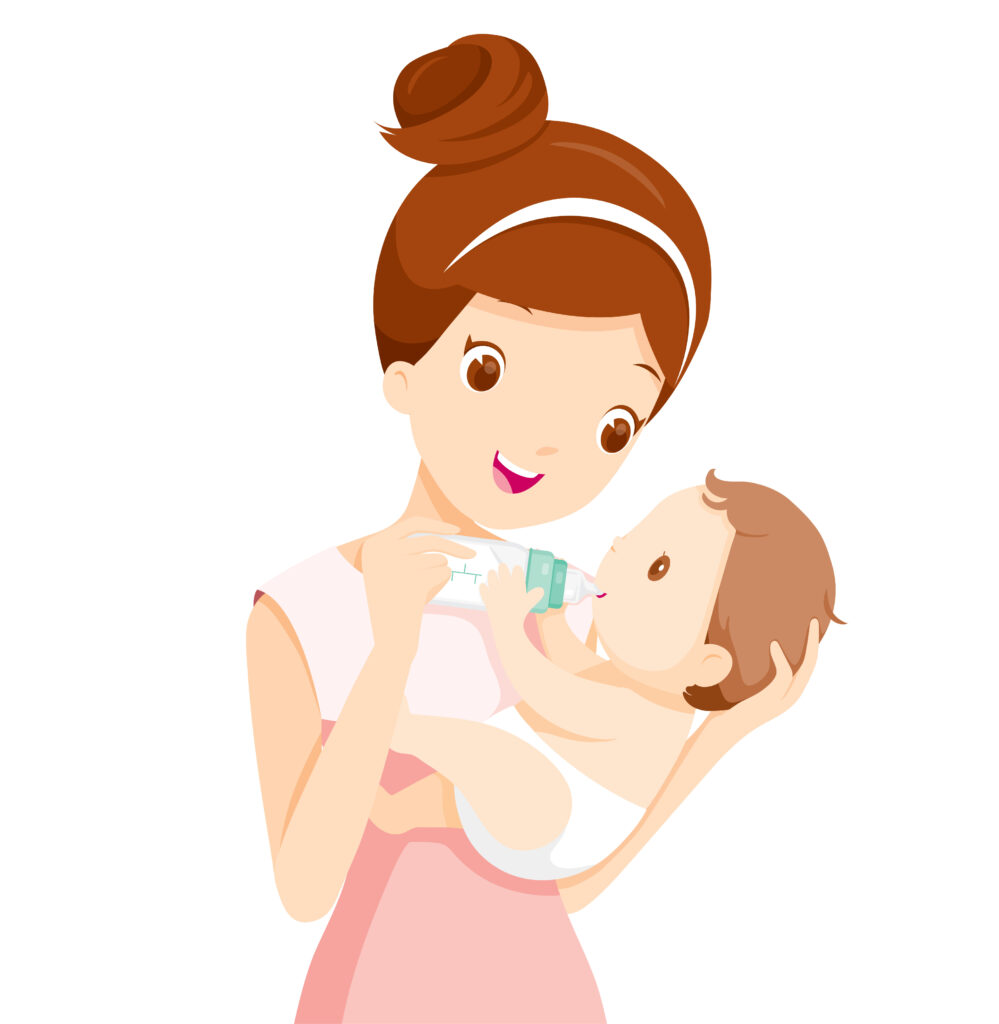Using your Pump
Wash and Dry Your Hands:
Before using your pump, wash your hands with soap, scrubbing for 10-15 seconds, then rinse with plenty of warm water. After washing, dry your hands thoroughly with a clean paper towel.
You do not need to wash your breasts before you pump unless you have been using a cream, ointment, or other product on your breasts that must be removed first.
Assemble Your Pump:
Consult your pump’s instruction manual for the proper way to assemble your pump.
Get Comfortable:
Find a clean and comfortable place where you can relax and not be disturbed while pumping. If you have an electric pump, find an area near an outlet so you can plug the pump in.
Position the Breast-Shield(s):
Consult your instruction manual for tips on positioning your nipple in the breast-shield(s). Your nipple should fit comfortably in the center of the opening in the breast-shield(s). Gently adjust the breast-shield(s) until it feels comfortable without pinching, pulling or otherwise irritating your nipple or breast tissue.
Begin Pumping:
If your pump is electric or battery-powered, turn the switch to the on position and the lowest suction and/or speed (cycle) setting. If you are using a manual pump, begin pumping. Consult your instruction manual for suggestions on an appropriate pumping speed. Adjust the speed until you find one that is comfortable for you.
What to Expect While Pumping
A qualified health professional, such as a certified lactation consultant, can help determine the best pumping method for you. Keep in mind that the amount of milk produced is different for everyone. A typical pumping session lasts about 10-15 minutes per breast, but you should only pump as long as it is comfortable and productive for you.
Your breast milk may not flow immediately after you start pumping, so try to be patient. When it does flow, your milk should be collected in the container attached to your pump. If milk is leaking out of your pump, stop pumping and make sure you have assembled the pump correctly before trying again. If your pump continues to leak, call the manufacturer’s customer service line for help.
When you have finished pumping, gently insert a finger between your breast and the breast-shield to break the vacuum seal. Remove the bottle or bag of collected milk from the rest of the pump, and label it with the date and time of pumping before storing it in the refrigerator or freezer. Below we cover more New Beginnings-Using your Pump information which will keep you moving forward on your parenthood journey.

All used breast pump parts such as bottles, valves and breast shields, should be cleaned after each use. It’s not possible to completely sterilize breast pump parts at home, even if you boil them. However, sterilization is not necessary to keep these parts safe and sanitary. You can do that by thoroughly washing away germs and bacteria with liquid dishwashing soap and warm water.
Some breast pumps parts can be put in the top rack of a dishwasher. Consult your instruction manual to make sure pieces are dishwasher safe before you put them in the dishwasher.
It is not necessary to clean breast pump tubing unless it comes in contact with breast milk. If you wash your tubing, make sure you hang it to air dry before attaching it to your breast pump. If small water drops (condensation) appear in the tubing after you have pumped, turn the pump on for a few minutes until the tubing is dry.
Microwave sterilizers are available for breast pump parts, but these sterilizers do not meet the FDA definition of sterilization. However, they will sanitize the parts, which is sufficient for processing between uses for a single user.

Room Temperature
Freshly expressed breast milk can be left at room temperature and fed to your baby within 4 hours of expressing. Most babies will accept room temperature milk as is, with no need for warming. Nutrients in breast milk are optimal when the milk doesn’t go through temperature changes of cooling and warming. If you are expressing milk for the next feeding, leave it at room temperature.
Refrigerator
Your breast milk can be stored safely in the refrigerator for 4 days. A little longer (5 – 7 days) is okay for a healthy, term baby. When you store milk in the refrigerator, plan to keep it in the back of fridge, far away from the door where temperatures fluctuate. If you find that you are not going to use the refrigerated milk within 4 days, freeze it.
Freezer
Breast milk can be stored in the freezer for a long time, 6 months is best, but up to 12 months is okay. Use the same location rule as for the refrigerator, store your milk in the back of the freezer, away from the door where temperatures fluctuate. You may want to consider breast milk storage bags.
Why use breast milk storage bags?
Breast milk storage bags help free up space in your bottles and let you store breast milk somewhere (your fridge or freezer) for later use. They are unlike storage bags you’ve used for food (so you can’t substitute a plastic sandwich bag, for example). Breast milk storage bags are much thicker and are BPA-free and FDA-approved for the use of storing and protecting breast milk during transportation, thawing and freezing.

Safe Thawing of Breast Milk
• Always thaw the oldest breast milk first. Remember first in, first out. Over time, the quality of breast milk can decrease.
• For example, there are several ways to thaw your breast milk:
• In the refrigerator overnight.
• Set in a container of warm or lukewarm water.
• Under lukewarm running water.
• Moreover, never thaw or heat breast milk in a microwave. Microwaving can destroy nutrients in breast milk and create hot spots, which can burn a baby’s mouth.
• Use breast milk within 24 hours of thawing in the refrigerator (this means from the time it is no longer frozen or completely thawed, not from the time when you took it out of the freezer).
• Once breast milk is brought to room temperature or warmed after storing in the refrigerator or freezer, it should be used within 2 hours.
• Never refreeze breast milk once it has been thawed.




